

Return to QRP index page
|
Suggested QRP Projects
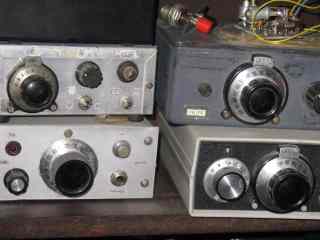 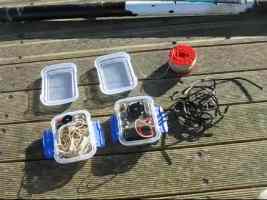 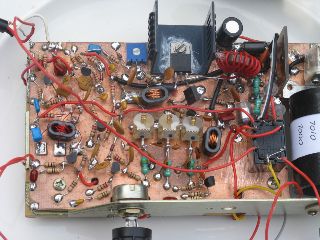
So you want to build a QRP rig? It doesn't
matter what band it operates on, but you want it to provide the most fun for
the least outlay (and fruitless CQ calls). You are not worried whether you work
DX or local stations, but your signal should be strong enough at the other end
to have a ragchew should this be desired. It needs to be stable yet
frequency-agile, fairly simple and have a reasonable receiver. The parts to
build it must be readily available and not cost a bundle.
If that's your idea of the ideal
first QRP rig, the following suggestions will appeal. Construction costs range
from about $30 (for a single band CW transmitter) to $200 or more for a multiband
and/or multimode transceiver. However, these costs can be reduced if you use
salvaged components and home made boxes.
Best Project #1 - Direct conversion DSB on 40 metresYou're content with talking nearby or to the next state rather than seeking the extremes of DX. Going portable with a simple station on a popular band appeals. And you want something good enough to make successful contacts nearly every time you go out. If that's what you want it's hard to go past a simple double sideband direct conversion transceiver for 40 metres. Provided it's frequency agile and puts out at least one or two watts, contacts up to approximately 1000 km should be routine with modest antennas during the day. And spanning 3000 km is quite possible at night. There are many designs around. the simplest use a wide swing variable crystal oscillator or 7.2 MHz ceramic resonator for frequency control. Either diodes or an NE602 IC forms the balanced modulator/product detector. The receiver will use either discrete transistors or an LM386 audio IC while the transmit power amplifier chain will use transistors such as 2N3904, 2N2222, 2N3053, 2N3866, 2N3553, BD139 or IRF510 (in order of increasing power output). My favourite design is the Beach 40 transceiver. Results are rewarding and construction need cost around $50 (less with some junk box components). Details and video demonstrations are available here. If most of your operating is at night and you're happy with a range of 300 - 400km, then an 80 metre double sideband transceiver is another option. The circuitry would be similar to a 40 metre rig except for the frequency control (use a 3.58 MHz ceramic resonator in Australia, a 3.69 MHz resonator in Europe or a 4 MHz resonator in the US) and different values for the pi network and any receiver front end filters.
Best Project #2 - Direct conversion CW on 80 or 40 metresMaybe simplicity, small size and low power consumption appeals. On backpacking trips everything must be carried and radios and batteries must be as small as possible to ensure room for necessities. Or being able to make contacts over hundreds or even thousands of kilometres with a transmitter assembled in an afternoon appeals. While there is less activity than SSB, particularly for contacts within VK, a CW rig may be the best choice. As with the DSB example above 40 metres is a good overall choice for local and medium distance contacts during the day and the possibility of DX at night. 80 metres is also good for short and medium distances at night and is less affected by interference from DX stations (who will rarely hear you). 40 metres seems to have higher overall CW activity. There is a regular Sunday morning CW net in Eastern Australia on 7025 kHz. Summits of the Air stations are also increasingly using CW on 7 MHz. Again designs are numerous. Transmitters may have between two and five active components, with a similar number in the receiver. Keying may be by interrupting power to the crystal oscillator (not recommended) or one or two of the following RF amplifier stages. The receiver product detector may be a passive type made from diodes or one using an IC such as an NE602. Either op-amps or discrete transistors can form effective audio audio filters and amplifiers. Battery power is preferred and reduces hum pickup which can plague simple receivers. Again I stress that frequency agility is key to success. Unless your antenna is very good most contacts will come from you calling other stations rather than them calling you. As a minimum use a wide swing VXO (covering at least a 20 to 50 kHz segment of the band). Or for all band coverage try a stable free running or DDS VFO. Crystals for usable CW frequencies on most HF bands are cheaply available from eBay suppliers and can form the basis of a QRP transmitter. Buy at least two of each frequency to provide the wider frequency excursions possible with a dual crystal 'super VXO'. Avoid transmitters with 7040 kHz crystals unless you wish to experiment with digital modes as it is outside the main area of CW activity in Australia. An important feature, often overlooked in simple transceiver designs, is a transmit/receive frequency offset. In other words the local oscillator must be a slightly different frequency on receive than transmit to ensure that stations calling you are audible. And being able to zero in on exactly the other station's frequency when calling them is essential to being heard, especially if they are using a narrow receiver filter. Frequency offset can be achieved in various ways, for instance by switching in another variable capacitor or varactor diode used on transmit or receive only. Direct conversion receivers are fine for casual use on bands like 40 and 80 metres. However unless they use special phasing circuitry they are less selective than superhets. Lower selectivity reduces their ability to pick out weak signals - particularly important if seeking to work DX or QRP stations. There is nothing wrong with building the transmitter only if you already have a good receiver. In fact a good receiver will assist in hearing QRP stations and others with marginal signals. All you need is a transmit/receive switch to team it up with your homebrew transmitter. This could be a relay or even just a double throw switch to switch antenna connections between transmit and receive. Choose a big enough case if intending to add a receiver section later. Ensure that the transmitter's local oscillator is either disabled or shifted to a very different frequency when receiving to prevent it blotting out incoming signals. This is different to a direct conversion transceiver where the local oscillator is running at all times because it is needed for the receiver. Another nice feature, if using seperate transmitters and receivers, is a 'spot' function. This is where you switch on the oscillator part of the transmitter (only) to allow it to be heard in the receiver. Then vary the frequency until it is the same pitch in the receiver as the station you wish to call. Then when you reply to him you'll be on the exact frequency he'll be monitoring. Failure to do this results in missed contacts because you weren't transmitting where the calling station was listening.
Best Project #3 - Superhet CW on 20 metresIf you want nothing more in radio than to work the world with a radio you built yourself, a CW transceiver for 20 metres is an excellent choice of project. 20 metres is less noisy than 40 or 80 metres and gain antennas are smaller. Its propagation characteristics favour 10 000 km plus contacts most days of the year, particularly around morning and late afternoon. DX CW contacts tend to be terse and often comprise little more than a signal report, name and location. But that may be just what is needed if you're more the award chaser, contester or not a natural conversationalist. 20 metres, or 14 MHz, can be a crowded band when the DX is in. Especially at the other end where your QRP multi-hop signal is competing against numerous higher power stations in the same continent as the DX you wish to work. For this reason your radio's specifications need to be better than may be passable for casual operating on 40 metres. Good frequency agility, a selective receiver and slick transmit/receive switching are all especially desirable. DX has been worked on simple direct conversion transceivers but a superhet transceiver with a good crystal filter may be a wiser choice. Such designs use more parts than basic direct conversion rigs but features such as better fine tuning on receive make them worthwhile. Many 1990s designs used NE602s for the receiver and mixer stages. These can give adequate performance and result in low current consumption. This is a definite advantage if operating portable. Superhet receivers have some gain at RF frequencies and may be less susceptible to hum than direct conversion designs.
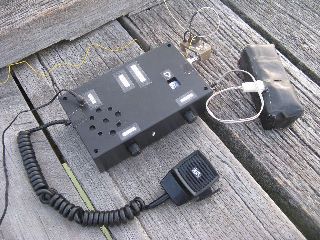
Best Project #4 - SSB HF transceiverDSB rigs offer big bang for the buck, but there is great satisfaction in building SSB gear. Compared to direct conversion gear the receivers are more selective and the transmitter is more efficient because the unwanted sideband is suppressed. You might even find the received audio crisper and more pleasant to listen to than on commercially made rigs costing thousands more. SSB designs are more complex so build a DSB or CW rig first to get experience. Or consider a simple SSB kit instead. If building a monoband rig pick a popular band that's guaranteed to get many contacts such as 80, 40 or 20 metres. A multiband SSB design offers greater flexibility but is a serious project taking weeks if not months to build. Again highly rewarding but not suggested as a first project.
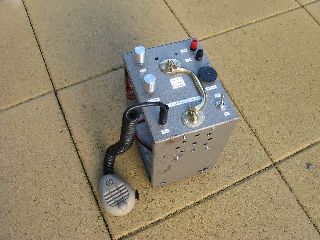
Best Project #5 - FT8/JS8 transceiverDigital modes are super-efficient with QRP. Especially if you are in a noisy area with limited room for antennas. A homebrew direct conversion FT8/JS8 transceiver on a popular band like 7 MHz can get many contacts. Personally I like to have both JS8 and FT8 in the one transceiver. JS8 is more conversational and has some handy automatic features. Whereas FT8 has more activity so contacts are possible nearly all the time. A QRP direct conversion transceiver for these modes is described below.
Novelty QRP projectsOnce you've built two or three rigs that cover some popular bands an interesting diversion is to try building rigs for other frequencies or modes. You might wish to experiment with AM transmitters on popular bands such as 160, 80 or 40 metres, or explore the wide open spaces of 10 metres and up. Digital modes such as WSPR can be transmitted by connecting a computer up to homebrew DSB rig with a couple of transistors. Using milliwatt VHF/UHF transmitters from hilltops is another interesting facet that shows how little power is required. Interest may also be sparked by the availability of a crystal that is on (or multiplies up to) a handy frequency. Or it may be an unusual circuit technique, trying out extremely simple rigs or even something powered by your own voice. The possibilities are endless. Assemble a library (starting with books such as Experimental Methods for RF Design) and start collecting parts. Soon your main problem will be more project ideas than time to build, but at least start with something.
|
Books by VK3YE
Ham Radio Get Started (USA)Australian Ham Radio Handbook (Aust) More Hand-carried QRP Antennas 99 things you can do with Amateur Radio Getting back into Amateur Radio Illustrated International Ham Radio Dictionary Make your Passion Pay (ebook writing)
All material on this site |